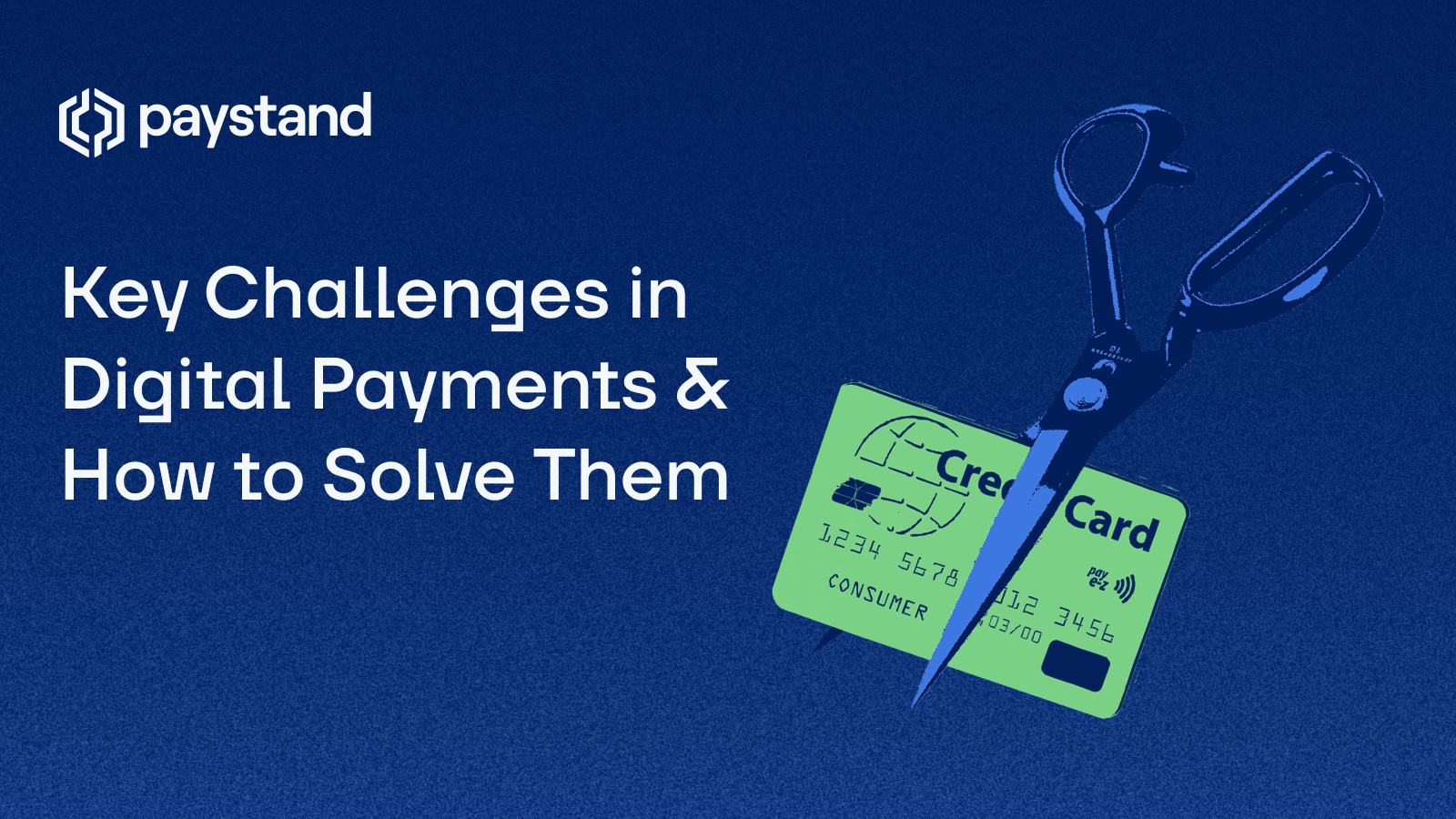Key Challenges in Digital Payments and How to Solve Them

Table of Contents
- Why Digital Payment Challenges Are Growing
- Common Pain Points in B2B Payment Processing
- The Role of Automation and Real-Time Data
- How Blockchain and Fee-Less Payments Provide an Edge
- Solving AR Inefficiencies with Paystand
Key Takeaways
- Finance leaders face growing challenges in digital payments, including high fees, fraud risks, and a lack of automation.
- Manual, siloed systems reduce visibility and delay receivables, harming cash flow and scalability.
- Modern solutions like Paystand's blockchain-based B2B payments network eliminate fees and automate the entire AR process.
- Upgrading to a digital-first payment infrastructure increases transparency, speeds up collections, and boosts financial resilience.
Why Digital Payment Challenges Are Growing
Digital transformation has reached finance, but many companies still rely on outdated payment systems. As the volume of B2B transactions increases, so does the complexity and cost of managing them.
With new technologies like digital wallets and mobile payments reshaping consumer expectations, B2B finance teams are under pressure to modernize their payment experience. But the journey away from legacy systems is not without its friction.
Common Pain Points in B2B Payment Processing
1. High Transaction Fees Erode Margins
Traditional payment processors and gateways often charge up to 3% per transaction. For mid-market businesses processing millions annually, that quickly becomes a massive drain on revenue.
2. Lack of Visibility Slows Decision-Making
Many AR teams operate in siloed environments with no real-time access to payment statuses or receivables data. This lack of visibility prevents proactive cash flow management and delays collections.
3. Fraud Risks Undermine Trust
Digital payments bring convenience but also increase exposure to fraud. Without robust fraud detection or authentication tools, companies are vulnerable to phishing, invoice fraud, and account takeovers.
4. Manual Work Creates Bottlenecks
From data entry to reconciliation, manual processes in the payment cycle are error-prone and time-consuming. These bottlenecks slow down cash conversion and limit scalability.
5. Fragmented Systems Complicate Reconciliation
Using multiple, disconnected platforms for invoicing, payments, and accounting creates friction. Without integration, finance teams waste hours reconciling payments and chasing down missing information.
To learn more about AR challenges and opportunities, check out Paystand's guide on accounts receivable challenges.
The Role of Automation and Real-Time Data
How Can Automation Help Finance Teams?
Automation in transaction processing eliminates repetitive tasks, accelerates collections, and ensures consistency. Smart workflows send automated reminders, match payments to invoices, and flag anomalies without manual intervention.
Why Is Real-Time Visibility Critical?
Real-time insights into receivables and payment activity help CFOs and controllers make faster, data-driven decisions. With real-time dashboards, teams can track KPIs like DSO and identify late payers before issues escalate.
Learn how to level up your AR operations with accounts receivable automation.
How Blockchain and Fee-Less Payments Provide an Edge
What Makes Blockchain Ideal for B2B Payments?
Blockchain introduces transparency, immutability, and security to digital payments. Each transaction is recorded in a shared ledger, reducing the chance of disputes and enhancing auditability.
Can You Really Eliminate Payment Fees?
Yes. Paystand’s blockchain-enabled network eliminates interchange and transaction fees by using a direct bank-to-bank infrastructure. This transforms payment processing from a cost center to a growth enabler.
Solving AR Inefficiencies with Paystand
Automate Receivables End-to-End
Paystand automates the full lifecycle of accounts receivable—from invoicing to reconciliation. It enables finance teams to focus on strategic tasks rather than chasing payments.
Improve Cash Flow With Faster Collections
With real-time reminders, easy payment portals, and automated matching, businesses collect payments faster. This frees up working capital and supports healthier cash flow.
Increase Transparency With Data-Driven Insights
Custom dashboards and audit-ready reports provide visibility into every transaction. Teams gain confidence and control over receivables.
Eliminate Costly Intermediaries
By removing traditional payment processors, Paystand lets companies bypass unnecessary fees and delays. Payments are faster, cheaper, and more secure.
Explore how accounts receivable management can be transformed with modern tools.
Digital payments shouldn’t be a source of friction—they should be a competitive advantage. But without the right infrastructure, finance teams face steep challenges in visibility, cost, and control.
Paystand offers a future-ready, blockchain-based payment network that automates the AR process, eliminates fees, and empowers finance leaders to scale with confidence.
Ready to overcome your digital payment challenges?
Visit Paystand to modernize your receivables and unlock feeless, automated B2B payments.






%20(1)%20(1).jpg?width=100&height=100&name=IMG_3752%20(1)%20(1)%20(1).jpg)